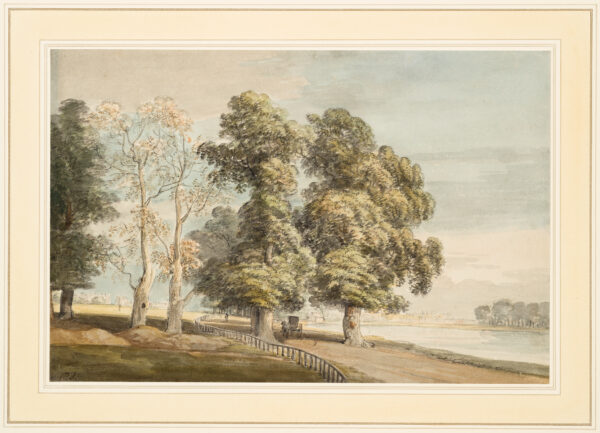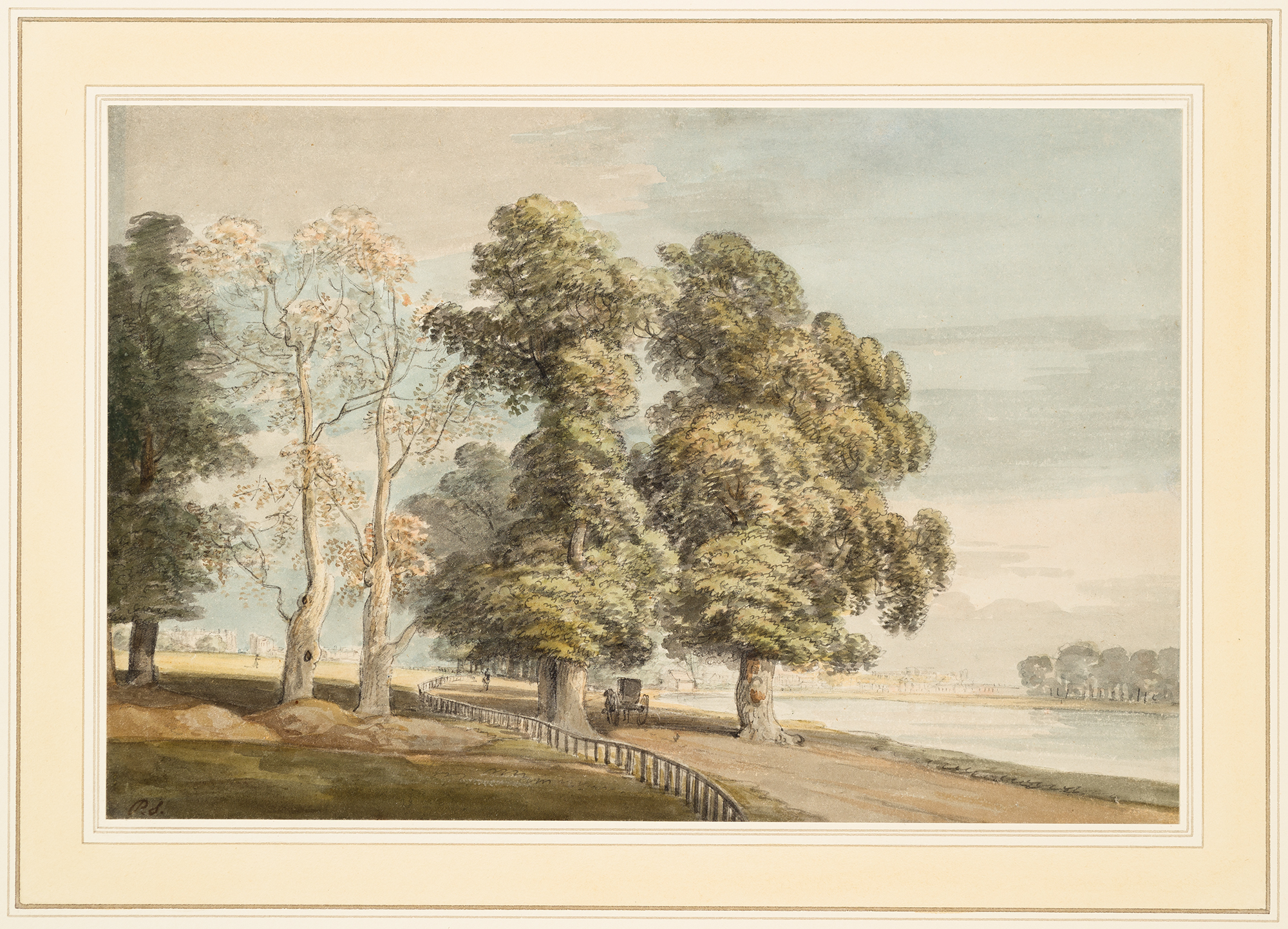
In Hyde Park
Sandby, Paul
about 1789
Artwork Information
-
Title:
In Hyde Park
-
Artist:
Sandby, Paul
-
Artist Bio:
British, 1725–1809
-
Date:
about 1789
-
Medium:
Watercolor, ink, and graphite on paper
-
Dimensions:
7 1/4 x 10 7/8 inches
-
Credit Line:
Wichita Art Museum, Museum purchase, Virginia and George Ablah Fund
-
Object Number:
1986.61
-
Display:
Not Currently on Display
About the Artwork
One of England’s most versatile and certainly most highly respected 18th century watercolorists was Paul Sandby. Sandby is sometimes regarded as the father of British watercolor painting but such a classification is hardly valid, for certainly the British painted in watercolor for several centuries before Sandy’s birth in 1725. Nevertheless, Sandby was indeed an innovator and, although he was not strictly a topographical painter himself, his experimental emphasis on landscape themes had long range influence on topographical painters in England throughout the late 18th and early 19th centuries.
This work, painted about 1789 and titled In Hyde Park, is a view with which Sandby was apparently well-acquainted, since his private residence was located immediately overlooking the park. Here the composition is clearly dominated by two ancient, massive trees which flank the dirt carriage path. On the one side, a low wooden fence gracefully winds along the edge of the path while, on the other, the path itself closely parallels the contours of a lake, quite probably the well-known Serpentine Lake artificially constructed in Hyde Park during the early 18th century. A single horse-drawn carriage passing between the two gigantic trees draws the eye into the distance where, just ahead of the carriage, is the tiny figure of a man on horseback.
Although Sandby may well have presented an accurate view of Hyde Park in this work, his interest actually would seem to have been more on the glorification of the natural setting than on topographical precision. Among the many characteristic features of Sandby’s work is the gentle touch so evident in the fine fluid line used to define form. This is accomplished most effectively in the fresh handling of foliage where leaves are drawn as strings of short wavy squiggle curves. The same sense of refinement is found in the delicate treatment of cloud formations and of reflections and shadows, or again in the carefully controlled tonal gradations imparted to the forms receding into atmospheric distance.
Of particular interest here are the striking contrasts introduced such as the sharp shift in scale between the gigantic trees and the tiny horseman and carriage along the winding path, or the marked dissimilarity between the massive trees with their luxuriantly green foliage on the one hand and the pair of seemingly dead trees nearby bearing only scattered dry brown leaves. Above all is the mood of calm and tranquility which is so effectively achieved by the subtle variations of form and by the harmonious interplay of a wide range of soft color tones that pervade the composition.
Paul Sandby was born in Nottingham in 1725. Both he and his artist brother, Thomas, settled in London in 1760. Paul Sandby himself was a founding member of the Royal Academy in 1768 and was the first professional artist to use aquatint in England. He was primarily a landscapist who exercised an enormous influence both on his contemporaries and on many watercolorists throughout the early 19th century in England. Sandby died in London in 1809, leaving an extensive body of works that are today housed in major museums throughout Britain.
